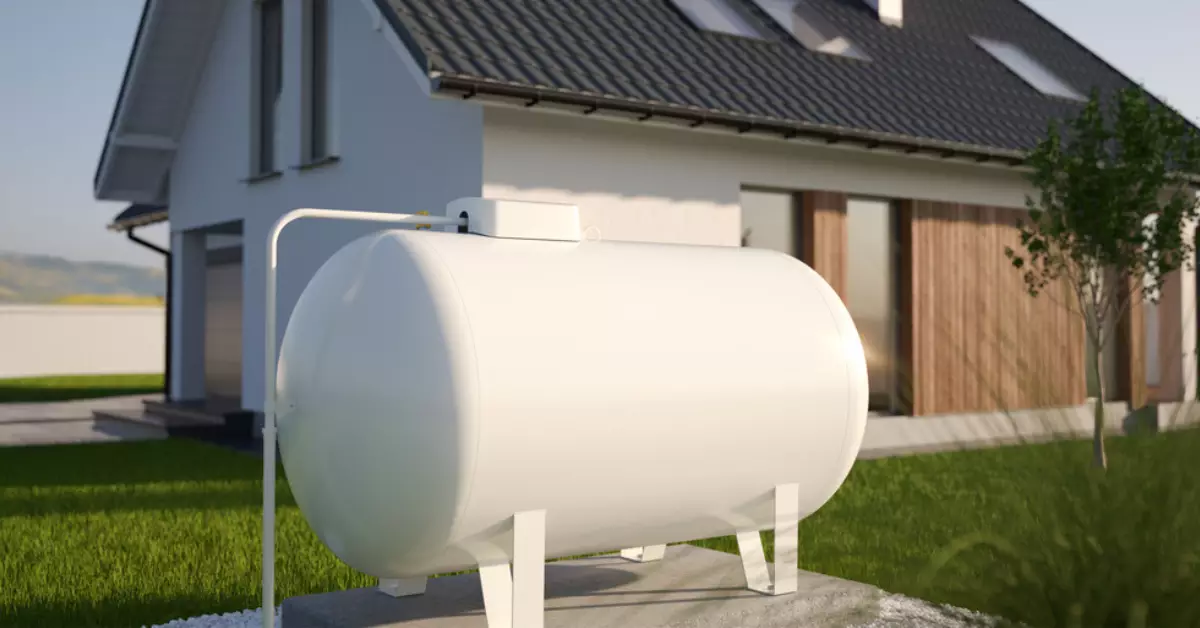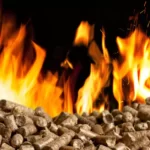In the sphere of heating solutions, both pellets and propane have made their mark. Pellets, essentially condensed biomass or wood matter, have been increasingly recognized for their eco-friendly attributes. Propane, on the other hand, is a versatile and easily accessible fossil fuel, popular for various residential and commercial uses.
For potential users of these energy sources, cost is often a major consideration. To that end, it might be surprising to discover that the question of whether pellets are cheaper than propane doesn’t have a straightforward answer. The cost comparison is complex and influenced by a multitude of variables, from regional pricing and seasonal demand to equipment costs and personal usage.
This discourse on cost, however, does not mean that price is the sole factor in choosing between pellets and propane. Aspects such as efficiency, environmental impact, and practical applications play equally important roles in this comparison.
Price Comparison: Pellets vs Propane
Overview of Pricing Factors
Understanding the prices of both pellets and propane requires a deep dive into the myriad factors that influence them. These factors can generally be categorized into three main domains: regional influences, seasonal fluctuations, and supply chain variables.
Cost of Pellets: A Deeper Look
Pellet prices can vary widely based on the type of pellet, production costs, and transportation expenses. Hardwood pellets, for example, tend to be more expensive than softwood or agricultural residue pellets. Similarly, local availability can also impact the cost, with regions having local pellet production facilities often experiencing lower prices.
Cost of Propane: A Deeper Look
Just like pellets, propane prices are influenced by a multitude of factors. The cost of crude oil, the refining costs, and distribution expenses all contribute to the final price of propane. Additionally, propane prices also tend to be volatile due to fluctuations in demand and supply, particularly during the colder months when heating demand increases.
Why Pellet Prices Can Vary
Regional Factors
Pellet prices can vary significantly based on geography. Regions with abundant biomass resources often have lower pellet prices. Additionally, prices may also be lower in areas with local production facilities due to reduced transportation costs.
Seasonal Fluctuations
Pellet prices often rise during the colder months due to increased demand for heating. This seasonal demand can cause a significant increase in prices, especially if the supply is limited.
Supply Chain Variables
The cost of production and delivery plays a significant role in the final price of pellets. Higher production costs, driven by increases in labor or raw material prices, can translate into higher pellet prices. Similarly, disruptions in the supply chain, such as transportation delays, can also result in price increases.
Why Propane Prices Can Fluctuate
Regional Considerations
Just as with pellets, the price of propane can vary widely based on regional factors. Areas with local production and refining facilities often have lower propane prices due to reduced transportation and distribution costs.
Impact of Seasonal Demand
Propane prices often spike during the colder months due to increased heating demand. These seasonal fluctuations can cause significant volatility in propane prices, especially in regions that are heavily reliant on propane for heating.
Supply and Distribution Influences
The cost of crude oil and refining processes significantly influence propane prices. Any volatility in oil prices or disruptions in refining operations can directly impact propane prices. Additionally, distribution costs, driven by transportation and storage expenses, also contribute to the final price of propane.
A Comparative Analysis: Pellet and Propane Prices
This section delves into a comparison between the pricing trends of pellets and propane, discussing similarities, differences, and the various factors affecting these costs.
Similarities in Pricing Trends
The trends observed in the pricing of pellets and propane share some key commonalities:
- Regional Influence: Both commodities see pricing variations across different regions. Areas with local production or processing facilities often have more competitive prices due to lower transportation and logistics costs.
- Seasonal Variation: The prices of both pellets and propane tend to rise during colder months. The heightened demand for heating sources during this period leads to an upsurge in their costs.
- Supply Chain Impact: Both pellet and propane prices are influenced by their respective supply chain dynamics. Any disruptions or increased costs in production, distribution, or delivery can trigger changes in their final market prices.
Differences in Pricing Trends
While there are shared characteristics in their pricing trends, pellets and propane also exhibit some distinct differences:
- Raw Material Influence: Pellet prices are heavily dependent on the cost and availability of raw materials, primarily wood or biomass. In contrast, propane prices are more tied to the global crude oil market since it’s a byproduct of oil and gas production.
- Production Process: The production process for pellets is fairly consistent, contributing to relative price stability. However, propane prices are more volatile due to complexities in refining and factors such as crude oil prices, geopolitical events, and refining capacity.
- Storage and Delivery: Propane requires specialized infrastructure for storage and delivery, adding to its costs. Pellets, while bulky, are easier and less expensive to store and transport.
Factors Affecting Comparative Costs
When comparing the costs of using pellets and propane, there are several important factors to consider:
- Efficiency: The efficiency of your heating system can significantly impact the total cost. Pellet stoves, for example, are highly efficient and can often heat a space using less fuel than propane heaters.
- Equipment and Installation: The cost of purchasing and installing the necessary equipment can be substantial. Pellet stoves and their installation are typically more expensive than propane heaters.
- Maintenance: Ongoing maintenance costs also come into play. Propane heaters generally require less maintenance than pellet stoves, which require regular cleaning and may have more parts that need replacing.
Practical Considerations: Choosing Between Pellets and Propane
Energy Efficiency: Pellets vs Propane
Both pellets and propane have their advantages in terms of energy efficiency:
- Pellets: Pellet stoves are known for their high efficiency, converting up to 90% of their fuel into heat. The high density and low moisture content of pellets contribute to this high efficiency.
- Propane: Propane heaters also offer considerable efficiency, usually around 80-85%. While slightly lower than pellets, the ease and convenience of using propane often make it a favored choice.
Environmental Impacts: Comparing Emissions
- Pellets: Pellets are a renewable energy source made from biomass. They emit fewer harmful pollutants and less carbon dioxide than fossil fuels, making them a more environmentally friendly choice.
- Propane: Propane is a fossil fuel but it burns cleaner than other fossil fuels like coal or oil. While it does emit carbon dioxide when burned, the emissions are lower compared to many other fuels.
Equipment and Installation Costs
- Pellet Stove Costs: Pellet stoves and their installation can cost anywhere from $1,000 to $5,000 depending on the model, size, and specific installation requirements.
- Propane Heater Costs: Propane heaters are generally less expensive to purchase and install, with costs ranging from $500 to $2,000 depending on the size and type.
Real World Scenarios: Pellets and Propane in Use
Residential Use: Heating and Cooking
- Pellets: Pellet stoves provide effective and efficient heating for homes. Their eco-friendly nature and high efficiency make them an appealing choice for homeowners who prioritize sustainability.
- Propane: Propane is versatile and can be used not only for home heating but also for cooking, water heating, and powering certain appliances. Its convenience and ease of use make it a favored choice in many households.
Commercial Use: Industrial Heating and Energy
- Pellets: In commercial settings, pellets are becoming increasingly popular for space and water heating. Some businesses also use them for process heat in manufacturing.
- Propane: Propane is widely used in commercial settings for space and water heating, cooking, and in certain industrial processes. Its high energy content and ease of use make it a practical choice.
Unique Use Cases: Pellets and Propane
- Pellets: Pellets are a great choice for heating in remote or off-grid locations due to their long shelf-life and ease of storage.
- Propane: Propane’s high energy content makes it popular in applications requiring significant heat output, such as metalworking, glass blowing, and pottery.
Making the Best Energy Choice
Personal Preferences and Needs
- Pellets: Ideal for those who prioritize environmental sustainability, cost-effectiveness over time, and efficient heating.
- Propane: A good choice for those who value convenience, versatility, and require high energy content.
Financial Considerations
- Upfront Costs: Pellet stoves generally have higher upfront costs than propane heaters. However, the cost of pellets is often lower than propane, which could lead to savings over time.
- Operating Costs: Propane heaters might have lower upfront costs, but the ongoing cost of propane can be higher, depending on the region and market fluctuations.
Environmental Commitments
- Pellets: Choosing pellets aligns with a commitment to reduce carbon emissions and utilize renewable energy sources.
- Propane: While propane is a fossil fuel, it’s one of the cleanest-burning, making it a more environmentally conscious choice than other fossil fuels.
Frequently Asked Questions
How much does a bag of pellets cost?
The cost of a bag of pellets can vary widely, usually ranging from $3 to $7. Factors influencing this price include the type of pellets, availability, and market demand.
Does propane or pellets burn hotter?
While propane generally burns hotter than pellets, pellet stoves are often more efficient. This means they can deliver more usable heat from the same amount of fuel.
Can you switch from propane to pellet heating?
Yes, it’s possible to switch from propane to pellet heating. However, this would require investment in a pellet stove and its installation, as well as adjustments in storage for the pellets.







